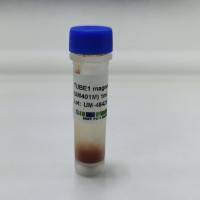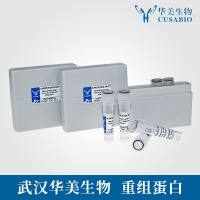In Vitro Analysis of Mouse Mesencephalic Neural Crest Development
互联网
- Abstract
- Table of Contents
- Materials
- Figures
- Literature Cited
Abstract
The neural crest is a unique structure in vertebrates. Neural crest cells play important roles in the formation of organs that characterize the vertebrate body plan. In this unit, we describe a primary culture method for mouse mesencephalic neural crest cells. The neural crest cells cultured by this method actively proliferate and differentiate into various cell types that originate from cranial neural crest cells, such as chondrocytes, neurons, and glia. Therefore, this primary culture method is useful for analyzing the development of mouse mesencephalic neural crest cells. Curr. Protoc. Neurosci. 56:3.23.1?3.23.8. © 2011 by John Wiley & Sons, Inc.
Keywords: mesencephalon; neural crest cells; primary culture
Table of Contents
- Introduction
- Basic Protocol 1: Primary Culture of Mouse Mesencephalic Neural Crest Cells
- Support Protocol 1: Preparation of Chick Embryo Extract (CEE)
- Reagents and Solutions
- Commentary
- Literature Cited
- Figures
Materials
Basic Protocol 1: Primary Culture of Mouse Mesencephalic Neural Crest Cells
Materials
Support Protocol 1: Preparation of Chick Embryo Extract (CEE)
Materials
|
Figures
-

Figure 3.23.1 Schematic diagram of mouse mesencephalic neural crest cell cultures. The lines numbered 1 to 3 in A show dissection procedures for the isolation of the mesencephalic neural fold: Separate off the cranial region of the forebrain and midbrain level by cutting at red line 1 with tungsten needles. Then, remove the forebrain region by dissecting at blue line 2. Finally, isolate the mesencephalic neural fold by dissecting at black line 3. Prepare the neural fold fragments from the isolated mesencephalic neural fold (B ). Seed the neural fold fragments in culture dishes (C ). After 24 to 48 hr, remove the epithelial components and establish the mesencephalic neural crest cell cultures (D, E ). View Image -

Figure 3.23.2 A colony of mouse mesencephalic neural crest cells at 48 hr in culture before (A ) or after (B ) removal of epithelial components. Scale bar = 500 µm. View Image -

Figure 3.23.3 Differentiating cells in mouse mesencephalic neural crest cell cultures. (A ) Neurons containing neurofilament 68kDa (NF68kDa) on culture day 10. (B ) Anti‐glial fibrillary acidic protein (GFAP)‐positive glial cells on culture day 4. (C ) Chondrocytes expressing collagen type II on culture day 10. Each differentiating cell was detected by immunocytochemistry using specific antibodies to NF68kDa, GFAP, or collagen type II. Scale bar = 50 µm. View Image
Videos
Literature Cited
| Literature Cited | |
| Baroffio, A., Dupin, E., and Le Douarin, N.M. 1988. Clone‐forming ability and differentiation potential of migratory neural crest cells. Proc. Natl. Acad. Sci. U.S.A. 85:5325‐5329. | |
| Chan, W.Y. and Tam, P.P.L. 1988. A morphological and experimental study of the mesencephalic neural crest cells in the mouse embryo using wheat germ agglutinin‐gold conjugate as the cell marker. Development 102:427‐442. | |
| Cohen, A.M. and Konigsberg, I.R. 1975. A clonal approach to the problem of neural crest determination. Dev. Biol. 46:262‐280. | |
| Hall, B.K. 1999. The Neural Crest in Development and Evolution. Springer, New York. | |
| Ijuin, K., Nakanishi, K., and Ito, K. 2008. Different downstream pathways for Notch signaling are required for gliogenic and chondrogenic specification of mouse mesencephalic neural crest cells. Mech. Dev. 125:462‐474. | |
| Ito, K. and Takeuchi, T. 1984. The differentiation in vitro of the neural crest cells of the mouse embryo. J. Embryol. Exp. Morph. 84:49‐62. | |
| Ito, K. and Morita, T. 1995. Role of retinoic acid in mouse neural crest cell development in vitro. Dev. Dyn. 204:211‐218. | |
| Ito, K., Morita, T., and Sieber‐Blum, M. 1993. In vitro clonal analysis of mouse neural crest development. Dev. Biol. 157:517‐525. | |
| Kubota, Y., Morita, T., and Ito, K. 1996. New monoclonal antibody (4E9R) identifies mouse neural crest cells. Dev. Dyn. 206:368‐378. | |
| Le Douarin, N. M. and Kalcheim, C. 1999. The Neural Crest, Second Ed. Cambridge University Press, Cambridge. | |
| Le Douarin, N. M. and Dupin, E. 2003. Multipotentiality of the neural crest. Curr. Opin. Genet. Dev. 13:529‐536. | |
| Loring, J., Glimelius, B., and Weston, J.A. 1982. Extracellular matrix materials influence quail neural crest cell differentiation in vitro. Dev. Biol. 90:165‐174. | |
| Nakanishi, K., Chan, Y.S., and Ito, K. 2007. Notch signaling is required for the chondrogenic specification of mouse mesencephalic neural crest cells. Mech. Dev. 124:190‐203. | |
| Osumi‐Yamashita, N., Ninomiya, Y., Doi, H., and Eto, K. 1994. The contribution of both forebrain and midbrain crest cells to the mesenchyme in the frontonasal mass of mouse embryo. Dev. Biol. 164:409‐419. | |
| Ota, M. and Ito, K. 2003. Induction of neurogenin‐1 expression by sonic hedgehog: Its role in development of trigeminal sensory neurons. Dev. Dyn. 227:544‐551. | |
| Ota, M. and Ito, K. 2006. BMP and FGF‐2 regulate neurogenin‐2 expression and the differentiation of sensory neurons and glia. Dev. Dyn. 235:646‐655. | |
| Serbedzija, G.N., Bronner‐Fraser, M., and Fraser, S.E. 1992. Vital dye analysis of cranial neural crest cell migration in the mouse embryo. Development 116:297‐307. | |
| Shah, N.M., Groves, A.K., and Anderson, D.J. 1996. Alternative neural crest cell fates are instructively promoted by TGFβ superfamily members. Cell 85:331‐343. | |
| Sieber‐Blum, M. 1989. Commitment of neural crest cells to the sensory neuron lineage. Science 243:1608‐1611. | |
| Sieber‐Blum, M. 1991. Role of the neurotrophic factors BDNF and NGF in the commitment of pluripotent neural crest cells. Neuron 6:949‐955. | |
| Sieber‐Blum, M. and Cohen, A. M. 1980. Clonal analysis of quail neural crest cells: They are pluripotent and differentiate in vitro in the absence of noncrest cells. Dev. Biol. 80:96‐106. | |
| Sugiura, K. and Ito, K. 2010. Roles of Ets‐1 and p70S6 kinase in chondrogenic and gliogenic specification of mouse mesencephalic neural crest cells. Mech. Dev. 127:169‐182. |







